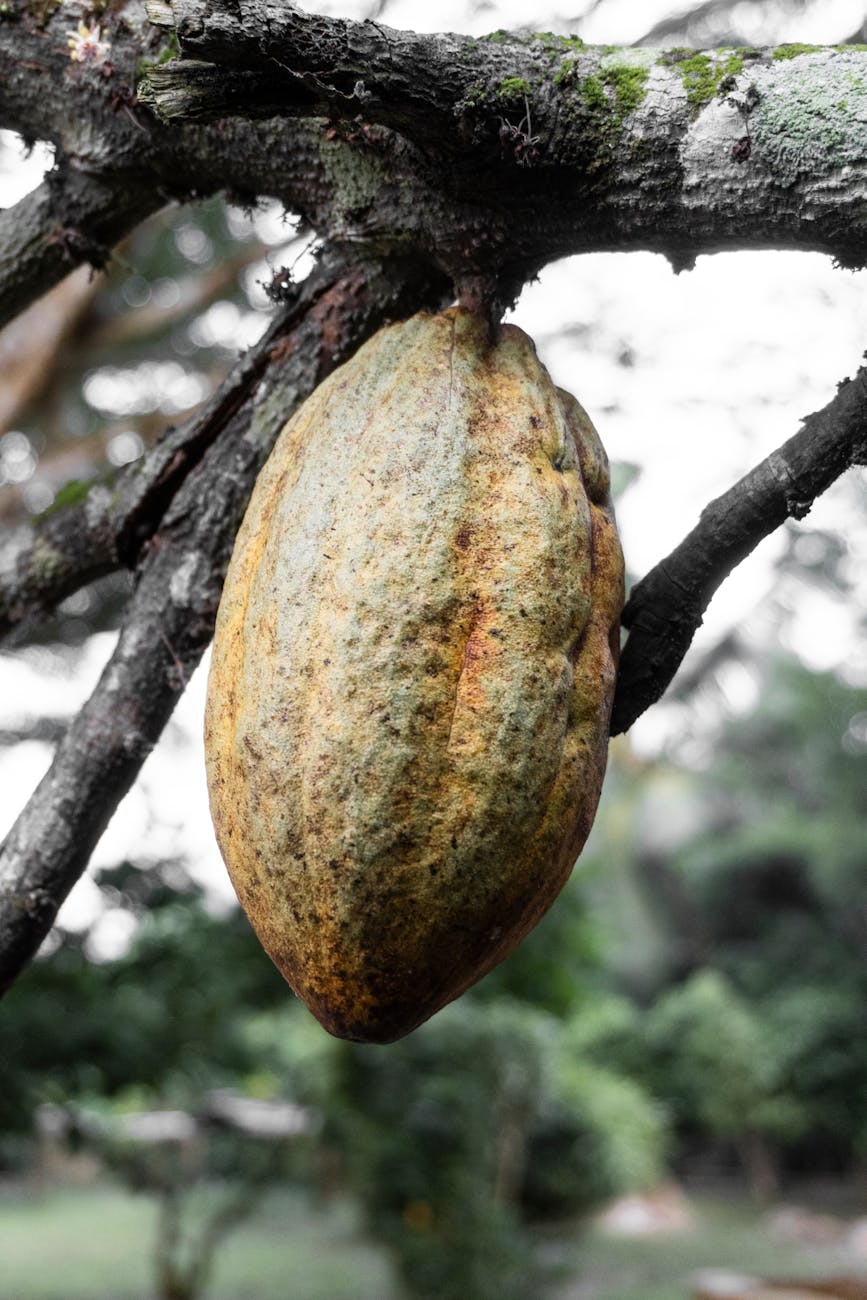In this hall, learn about cocoa production in Nigeria, including its economic importance, cultivation processes, regional distribution, and major challenges facing farmers and exporters.
Cocoa Production in Nigeria: Importance, Processes, and Challenges
Table of Contents
- Introduction
- Importance of Cocoa in Nigeria
- Ecological Requirements for Cocoa Cultivation
- Cocoa-Producing States in Nigeria
- Processes Involved in Cocoa Production
- Harvesting and Post-Harvest Handling
- Economic Value and Export Opportunities
- Challenges of Cocoa Production in Nigeria
- Solutions and Government Interventions
- Revision Questions and Answers
- Conclusion
Introduction
Cocoa is one of Nigeria’s most valuable cash crops and an important source of foreign exchange. Nigeria is among the top cocoa-producing countries globally, and cocoa farming provides livelihoods for millions of smallholder farmers, especially in the southwestern region. Though overshadowed by crude oil in recent decades, cocoa remains crucial to Nigeria’s agricultural sector, especially for export diversification.
READ ALSO – Yam Cultivation in Nigeria: Techniques, Benefits, and Challenges
Importance of Cocoa in Nigeria
Cocoa (Theobroma cacao) plays a significant role in Nigeria’s economy. Its beans are processed into cocoa butter, powder, and chocolate—products that are in high demand globally. The crop is a major foreign exchange earner and supports value chains involving transportation, processing, packaging, and exportation. It also contributes to rural employment and poverty alleviation.

Ecological Requirements for Cocoa Cultivation
Cocoa is a tropical crop that thrives under specific environmental conditions:
- Rainfall: 1,200 to 1,800 mm per year, evenly distributed
- Temperature: 21°C to 32°C
- Soil: Deep, well-drained, loamy soils rich in organic matter
- Shade: Requires partial shade especially in early stages
- Altitude: Grows well in lowland and slightly elevated areas
These conditions are largely found in the southern parts of Nigeria.
Cocoa Planting Season in Nigeria
In Nigeria, the best time to plant cocoa is during the early rainy season, which typically falls between April and June. This period provides adequate soil moisture necessary for the survival and early establishment of cocoa seedlings in the field.
Details of the Cocoa Planting Season:
- Southern Nigeria (Southwest, Southeast, and South-South):
- Main planting season: April to June
- Occasional second season (in high rainfall areas): September to early October, but this is less recommended because of limited time for seedlings to establish before the dry season.
- Nursery Stage:
- Seeds are usually sown in nursery bags from December to February, allowing 3–5 months of growth before transplanting at the onset of rains.
Planting cocoa during the rainy season ensures that young seedlings receive consistent water, reducing transplanting shock and promoting early root development. For best results, planting should be completed before the peak of the rainy season to prevent waterlogging.
Cocoa-Producing States in Nigeria
Cocoa is predominantly grown in the southwestern and southeastern regions. Major cocoa-producing states include:
- Ondo State – Nigeria’s leading cocoa producer
- Cross River State
- Oyo State
- Ekiti State
- Osun State
- Edo State
- Abia and Imo States
These states benefit from fertile soil, good rainfall patterns, and supportive farming communities.
Processes Involved in Cocoa Production
a. Land Preparation
Land is cleared and tilled to ensure good soil aeration. Cocoa is often intercropped with shade trees such as plantain or banana in the early years.
b. Nursery Establishment
Cocoa seeds are raised in nursery bags for 3–6 months before transplanting.
c. Transplanting
Seedlings are transplanted during the rainy season into holes spaced 3 x 3 meters apart.
d. Maintenance
Regular weeding, mulching, fertilizer application, and pest control are essential. Shade management and pruning help improve yield.
e. Fertilization
Organic matter and NPK fertilizers (especially nitrogen and potassium) support pod development and soil health.
Harvesting and Post-Harvest Handling
Harvesting:
Cocoa trees begin to bear fruit from the third or fourth year, with peak harvest periods between October and March. Ripe pods are harvested manually using knives or cutlasses.
Fermentation:
Harvested beans are scooped out and fermented in heaps or wooden boxes for 5–7 days to develop flavor and reduce bitterness.
Drying:
Fermented beans are sun-dried on mats or drying racks for 5–10 days until moisture content is reduced to around 6–8%.
Bagging and Storage:
Dry beans are bagged and stored in ventilated rooms, free from moisture, to avoid spoilage before marketing or export.
Economic Value and Export Opportunities
- Cocoa is Nigeria’s second-largest agricultural export product after sesame.
- Major international buyers include the Netherlands, Germany, Malaysia, and the United States.
- Nigeria exports both raw cocoa beans and processed cocoa products.
- The crop supports cocoa processing factories and industries producing chocolate, cosmetics, and pharmaceuticals.
Challenges of Cocoa Production in Nigeria
Despite its significance, cocoa production faces many challenges:
- Old and low-yielding trees in many farms
- Pests and diseases such as black pod disease, mirids (capsids), and fungal infections
- Lack of access to improved seedlings and inputs
- Fluctuating global prices and unstable markets
- Poor infrastructure and post-harvest losses
- Youth disinterest in farming, leading to aging farmer populations
- Climate change affecting rainfall patterns and productivity
Solutions and Government Interventions
To revitalize cocoa production, the following solutions have been proposed or implemented:
- Distribution of improved hybrid cocoa seedlings by agricultural agencies
- Training programs for farmers on modern cultivation and post-harvest practices
- Subsidized inputs such as fertilizers and fungicides
- Access to credit through cooperatives and agricultural banks
- Promotion of local cocoa processing to boost value addition
- Export incentives and reduced tariffs on cocoa-related equipment
Collaborative efforts between federal and state governments, private investors, and international partners are critical to boosting cocoa production in Nigeria.
Revision Questions and Answers
1. What is the botanical name of cocoa?
Theobroma cacao
2. Mention two major cocoa-producing states in Nigeria.
Ondo and Cross River States.
3. At what age does cocoa begin to produce pods?
Usually from the third to fourth year.
4. What are the two major post-harvest processes in cocoa production?
Fermentation and drying.
5. Mention one major challenge facing cocoa farmers in Nigeria.
Prevalence of black pod disease.
READ ALSO – Cassava Cultivation in Nigeria: Steps, Benefits and Challenges
Conclusion on Cocoa Production in Nigeria
Cocoa production remains a vital part of Nigeria’s agricultural and economic landscape. Despite its challenges, the crop has the potential to drive rural development, diversify foreign earnings, and expand industrial processing. With proper investments in improved farming techniques, infrastructure, and policy support, Nigeria can regain its position as a top cocoa exporter in the world.
